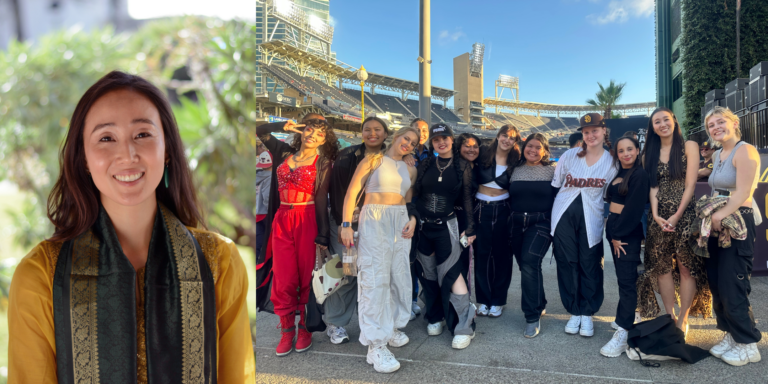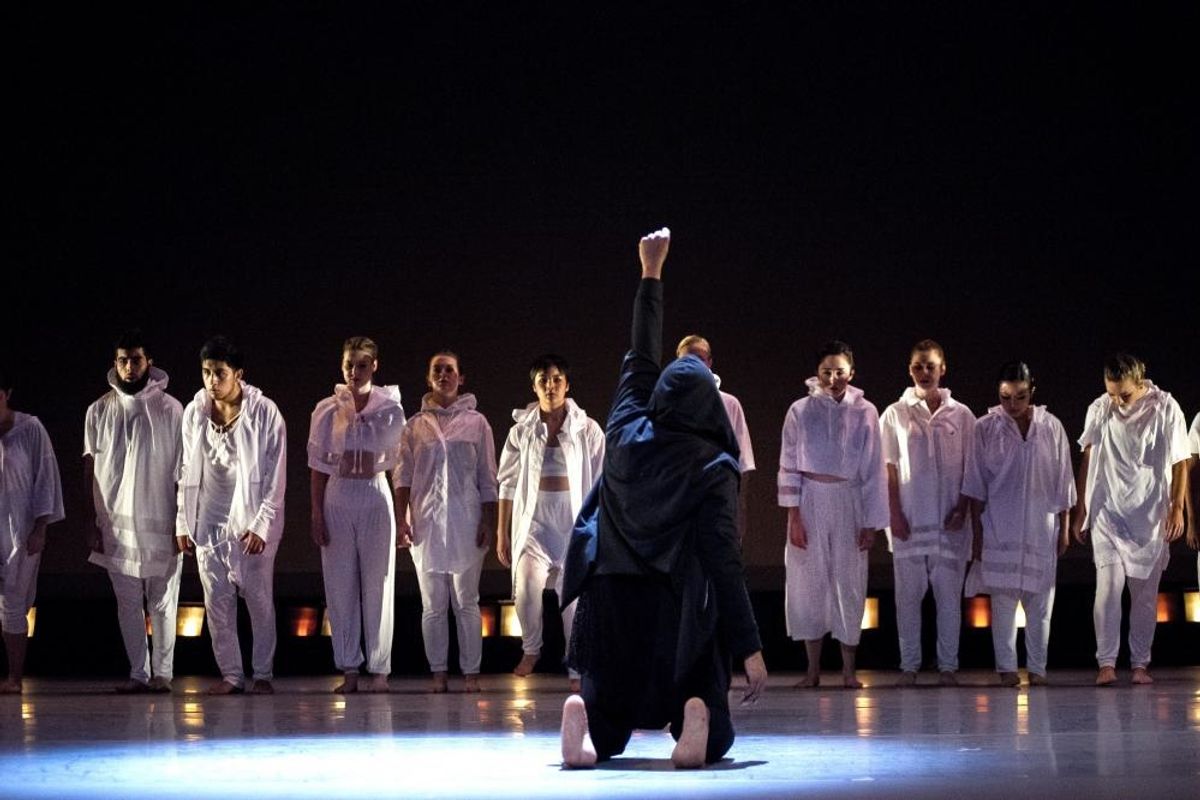
Given the long history of American choreographers who have threaded activism into their work—Katherine Dunham, Pearl Primus, Donald McKayle, Joanna Haigood, Bill T. Jones, Jo Kreiter, to name a few—it’s perhaps surprising that collegiate dance has offered so little in the way of training future generations to do the same.
Until now, that is. Within the last three years, two master’s programs have cropped up, each the first of its kind: Ohio University’s MA in community dance (new this fall), and the University of Texas at Austin’s dance and social justice MFA, which emerged from its existing MFA program in 2018. These two programs join the University of San Francisco’s undergraduate performing arts and social justice major, with a concentration in dance, which has been around since 2000.
To Amie Dowling, associate professor at USF, the birth of similar programs makes sense. “This generation is calling for equality, ethical community engagement and equity,” she says, and programs like these are “training students to use movement to investigate the issues that are important to them.”
Though UT and OU’s programs are still finding their feet, there’s reason to believe we may see more degree offerings like theirs soon. “Our intention is not to be unique, but in some ways to make ourselves obsolete,” says Charles Anderson, head of UT Austin’s dance department, “so that we can make this field dynamic and responsive to its times.”

Jennifer Reel, courtesy Anderson
Suddenly, with the resurgence of the #BlackLivesMatter movement, that goal doesn’t seem so far off. Dance curriculums across the country are undergoing sweeping overhauls, as programs rethink their white-centered, European roots and aspire to produce graduates who can advocate for social justice. “In our current social and political moment, bodies are at the center of our core conflicts,” says Dowling. “Resisting begins with a mindful relationship to our embodied experiences.”
What are these programs?
Tresa Randall, associate professor at OU, defines community dance as “anytime professionals are working with nonprofessionals. It’s engaging people in the practice of dance—anything that goes beyond just coming to the theater to see a concert.”
Randall first toyed with the idea of a community dance MA after seeing how many OU dance undergraduates wound up having to forge their own paths in the community dance field. “Sometimes there are existing jobs, but most often, someone is creating a new program or partnering with existing programs and integrating dance into those,” she says. OU’s program now makes that process easier, preparing students for jobs such as outreach directors for dance companies and teaching artists in both the private and public sectors. (The state of Ohio recently created a roster of teaching artists, so OU graduates can also apply to have their names added to a list of recommended arts educators.)
UT Austin’s MFA in dance and social justice offers its students a place to workshop how they can marry their commitment to social justice to their physical practice. “All classes bring social justice to the forefront,” says Erica Saucedo, who is in her third of five semesters at UT Austin. “Because I am a woman of color, and all of the companies I’ve worked with in the past were centered around anti-racism, I do feel like I arrived here with a lot of tools. But this program is providing me with really incredible mentors. And it’s providing funding, so I actually have time to imagine how radically I want to go in the direction of liberation.”
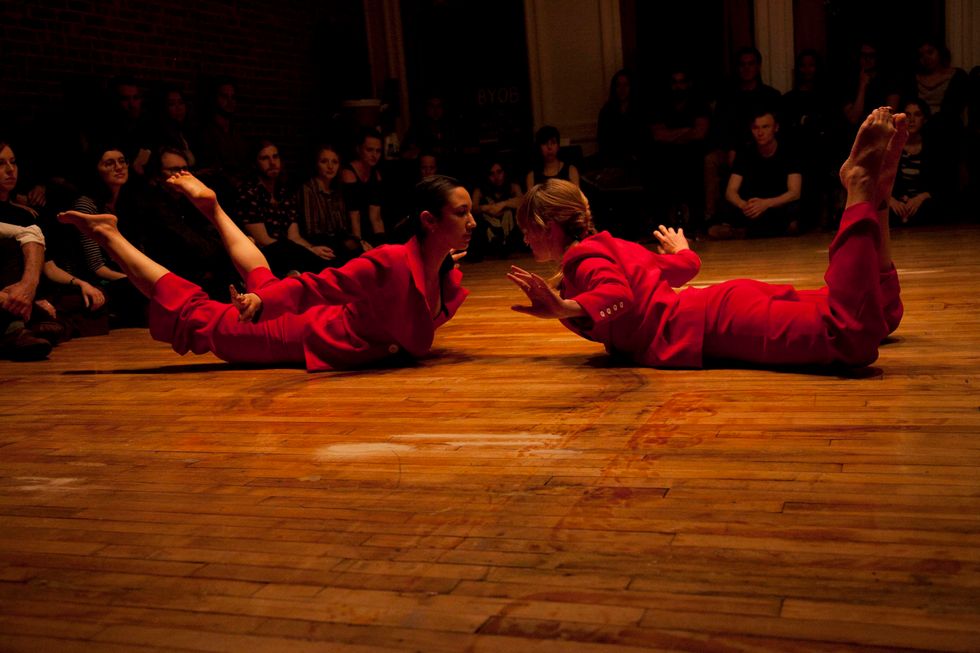
Kyle Netzeband, courtesy Saucedo
When creating UT Austin’s MFA, Anderson looked to USF’s performing arts and social justice undergraduate degree for guidance. “This degree grew out of the belief that artists have a role in developing a more just and equitable world,” says Dowling. USF students “investigate how artists enter communities, develop relationships with people, identify issues, deepen research and gather material for the creation of performances,” she says.
One recent real-life example: the 14-week collaboration between USF majors, the Resolve to Stop the Violence Project and the Bay Area Video Coalition that grew out of USF’s performing arts and community exchange course. Students collaborated with incarcerated individuals to create performances involving movement, music, writing and theater.
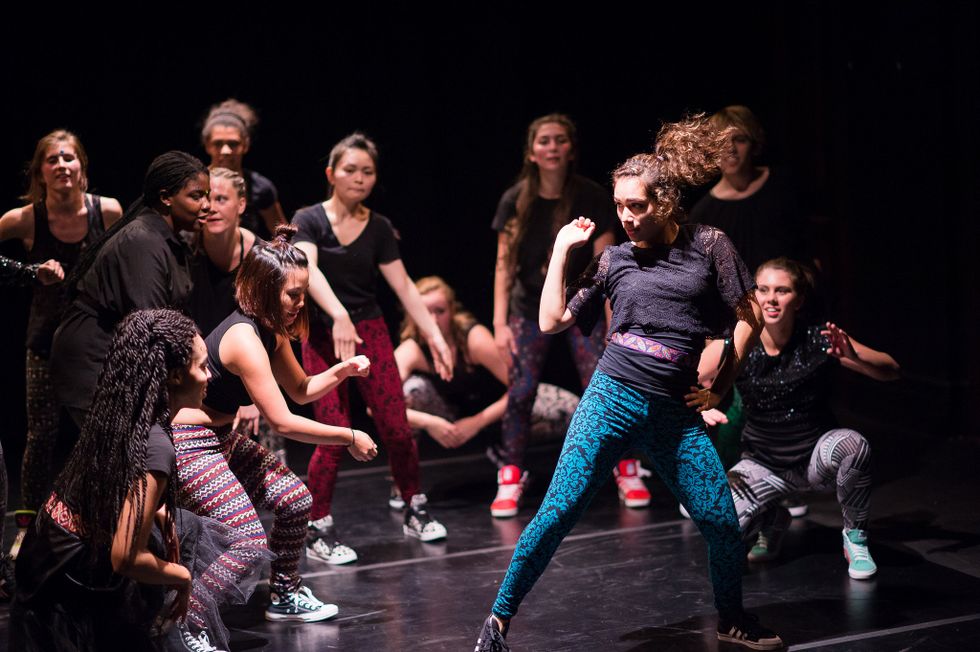
Lawrence Peart, courtesy USF
What sets them apart
Like most dance degree candidates, students at UT Austin, USF and Ohio University can expect to take a mix of classes: physical practice, pedagogy, performance, production. But they also take courses that involve community engagement, and that marry theory with real-world and embodied practice.
At USF, students can take Dance in the Community and teach dance to schoolchildren—or participate in USF’s intergenerational dance company, Dance Generators, which pairs students with Bay Area adults.
At OU, graduate students take a course called Community Dance Theory and Practice during their first year, which surveys different models for community dance and studies research on the benefits of dance for certain populations. “We want to give graduates a bank of knowledge to use to advocate for the value of dance,” says Randall. “With a lot of community dance projects, it’s about convincing another entity to partner with you.”
At UT Austin, a focus on physicalizing knowledge keeps theoretical concepts connected to the body. For example, one of Saucedo’s assignments was to create a solo movement autobiography through the lens of her research, in conjunction with curriculum learnings about decolonizing “the mind, body and spirit,” she says. “It was up to me how I could balance bringing in critical theory from scholarly materials with processing that information through the body.” At a certain point, students are encouraged to “stop thinking about it, and put it in your body.”
UT Austin students also combine their research with an applied project, as Saucedo has done with Geografía, a contemporary dance festival she co-founded that celebrates Latinx narratives. This summer, when COVID-19 forced Saucedo to suspend the festival, she earned summer credit writing about the festival.
Both OU and UT Austin allow students to craft their own physical practice pathways, depending on their interests and backgrounds. “We’ve been successful in drawing folks to our program who don’t necessarily specialize in ballet or Western forms of modern,” says Anderson. OU also offers students wiggle room in how long it takes them to complete the three-semester program, depending on how much time they need to explore course content and plan their capstone project.
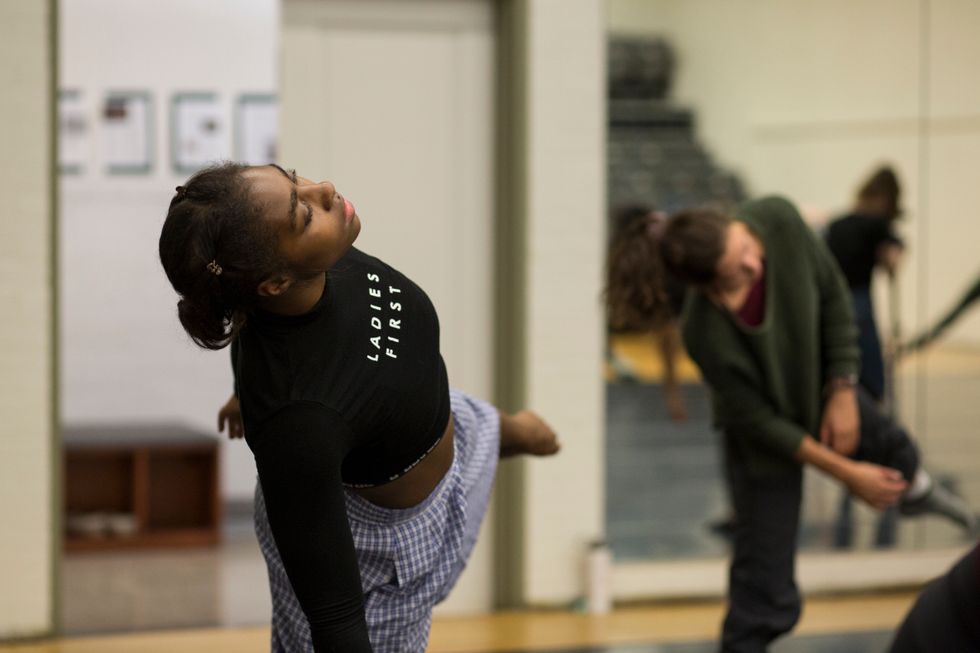
Riley Perone, courtesy Ohio University
Why we need them now
These programs are responding to trends both in the dance community and in the wider world. “The concept of social justice is showing up everywhere,” says Anderson. In recent months, conversations around decolonizing higher ed dance curriculums—which historically prioritize Western techniques and relegate diasporic ones to electives—have gained traction, but this concept was already built into UT Austin’s program. “We’re really invested in shifting policy in dance,” says Anderson. “There’s a yearlong course called Dance in Academia. We’re exposing the Byzantine nature of academia in relationship to the professional field and curatorial practices. How do we shift away from European, patriarchal paradigms?”
The idea of using dance as an agent of change also permeates OU’s master’s program. “A lot of community dance programs,” Randall says, “are born out of an issue that’s of pressing concern for a community.” The concept of community dance, surprisingly, has only become more relevant since the pandemic. “Shifting dance online raises questions: What parts of a dance class can we capture and deliver online? What parts get lost in that translation?” says Randall. “When we talk about adapting dance to different populations, that idea of translation is inherent.”
Both online learning and #BlackLivesMatter have exposed long-held prejudices about dance training. It’ll take time for higher education to catch up, warns Dowling. “It isn’t a single event—changing curriculum—and there are no steps to follow,” she says. It requires “unpacking, unlearning and undoing colonial ideas, infrastructures and goals embedded in higher education.”
But students for whom dance and social justice already go hand in hand—and who’ve been trained with the tools to merge them effectively—are well-poised to seize upon this moment.



